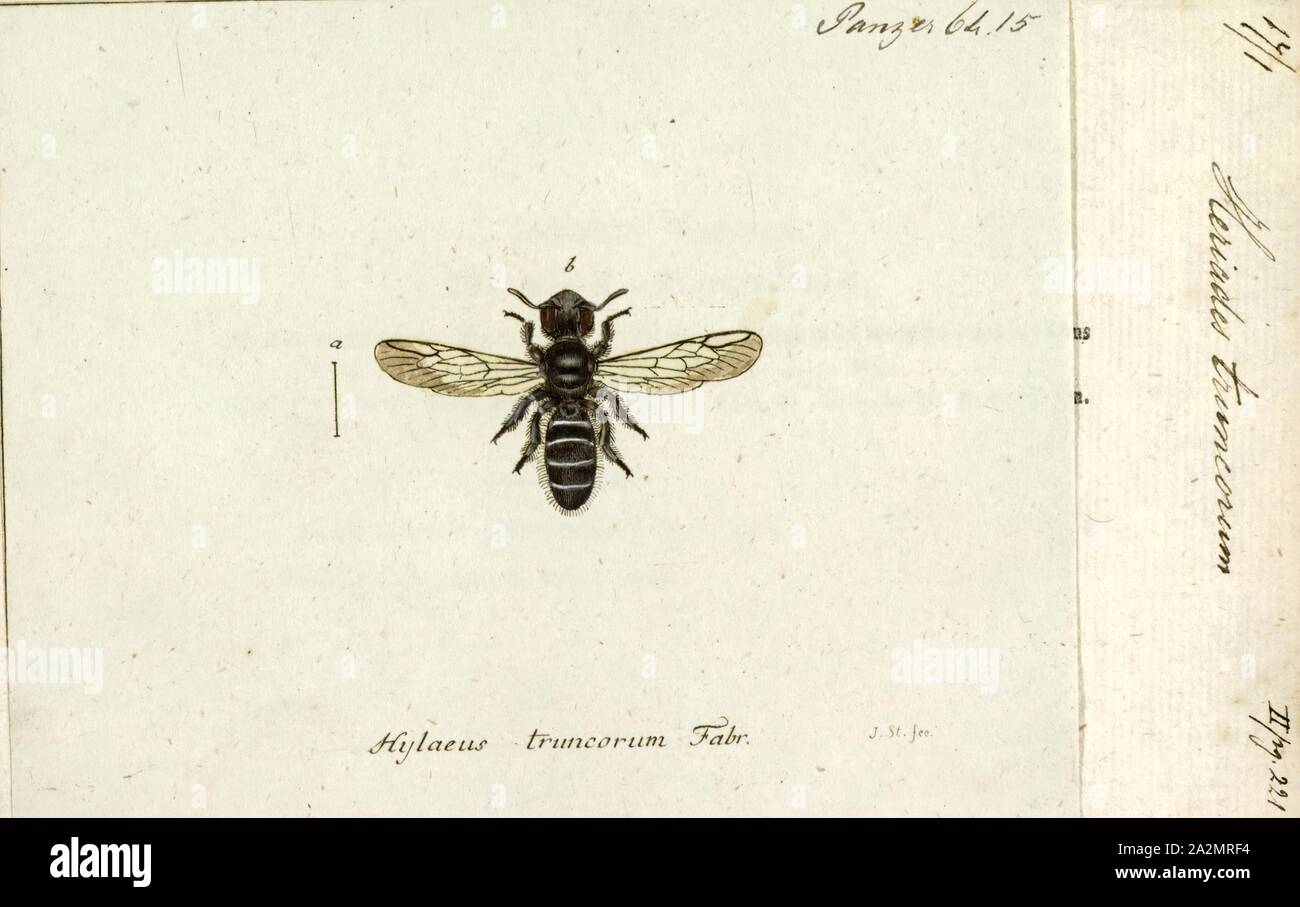Heriades, Print, Heriades is a genus of bee in the family Megachilidae. Fairly small and usually black, they are found all over the world. There are more than 130 species worldwide, roughly 25 species in North and Central America, but only 3 species are native east of the Rocky Mountains. European species such as H. truncorum can be found on the east coast of the US. Like other bees in the tribe Osmiini, Hoplitis and Ashmeadiella, they nest in cavities in wood excavated by other insects, or perhaps occasionally pine cones. They separate the cells of their nest with resin (most of the time

Image details
Contributor:
Penta Springs Limited / Alamy Stock PhotoImage ID:
2A2MRF4File size:
23.9 MB (596.7 KB Compressed download)Releases:
Model - no | Property - noDo I need a release?Dimensions:
3646 x 2294 px | 30.9 x 19.4 cm | 12.2 x 7.6 inches | 300dpiPhotographer:
ArtokoloroMore information:
This image could have imperfections as it’s either historical or reportage.
Heriades, Print, Heriades is a genus of bee in the family Megachilidae. Fairly small and usually black, they are found all over the world. There are more than 130 species worldwide, roughly 25 species in North and Central America, but only 3 species are native east of the Rocky Mountains. European species such as H. truncorum can be found on the east coast of the US. Like other bees in the tribe Osmiini, Hoplitis and Ashmeadiella, they nest in cavities in wood excavated by other insects, or perhaps occasionally pine cones. They separate the cells of their nest with resin (most of the time).